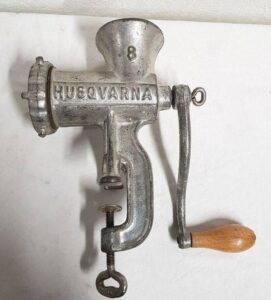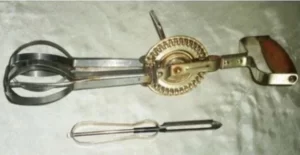The Fascinating Journey of the Kitchen Mixer
The Fascinating Journey of the Kitchen Mixer
Have you ever paused to ponder the origins of the trusty kitchen tool, the mixer? Let’s embark on a journey back in time to uncover the fascinating history behind this indispensable appliance.

The Genesis of Mixing In the mid-19th century, culinary innovation took center stage with the introduction of the first mixer featuring rotating parts, patented by Baltimore tinner Ralph Collier in 1856. Shortly thereafter, E.P. Griffith’s whisk received patent recognition in England in 1857. Adding to the mix, the Monroe brothers, J.F. and E.P., left an indelible mark with their hand-turned rotary egg beater, patented in the US in 1859. These early inventions caught the eye of the Dover Stamping Company, which acquired the Monroe brothers’ patent. The Dover egg beaters swiftly became an iconic American brand, fondly known as the “Dover beater.” In a delightful testament to its popularity, a recipe published in the Gazette newspaper of Cedar Rapids, IA, in February 1929 even featured the renowned Dover beater in a mouthwatering dessert recipe titled “Hur-Mon Bavarian Cream.”

The Emergence of Electric Mixers The history of electric mixers traces back to 1885 when American inventor Rufus Eastman unveiled the first mixer featuring an electric motor. However, it was the Hobart Manufacturing Company that truly transformed the industry with their introduction of large commercial mixers. In 1914, the company unveiled a groundbreaking new model that forever altered the mixer landscape. Throughout the early 20th century, two prominent American brands, the Hobart KitchenAid and the Sunbeam Mixmaster, emerged as popular choices among consumers. Despite their growing popularity, electric mixers remained a luxury item in most households until the 1920s, when they began to see widespread adoption for home use.
The Invention of the Stand Mixer In 1908, Herbert Johnston, an engineer at the Hobart Manufacturing Company, observed a baker struggling to mix bread dough with a metal spoon, sparking his innovative idea. Recognizing the need for a more efficient solution, Johnston set out to create a mechanical counterpart to streamline the process. By 1915, Johnston’s 20-gallon mixer had become standard equipment in most large bakeries. Then, in 1919, the Hobart Manufacturing Company introduced the Kitchen Aid Food Preparer, also known as the stand mixer, for home use. This revolutionary invention quickly became a fixture in kitchens across the nation.
The evolution of mixers has been remarkable since their modest beginnings in the 19th century. From hand-turned rotary beaters to the integration of electric motors and the advent of the stand mixer, this indispensable kitchen appliance has undergone numerous advancements to simplify culinary tasks.
So, the next time you prepare a batch of cookies or blend a delectable cake batter, take a moment to reflect on the rich history behind your reliable mixer. It serves as a testament to human innovation and the pursuit of convenience in everyday life.
![]()






